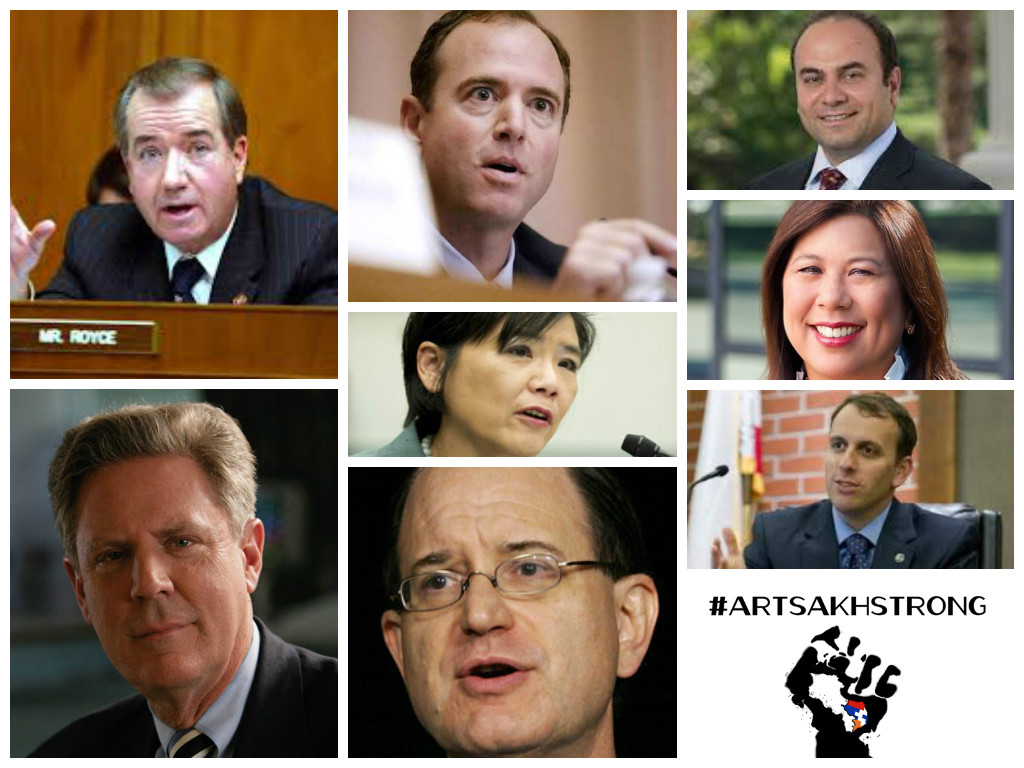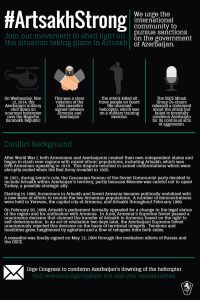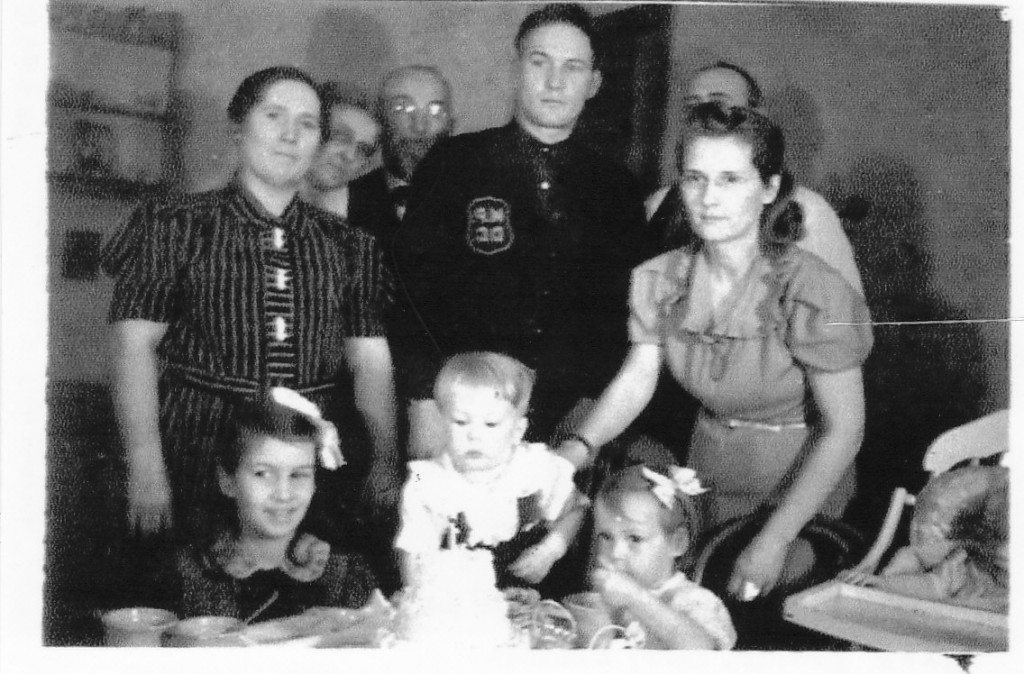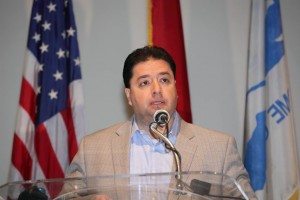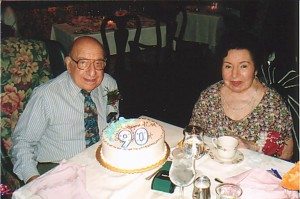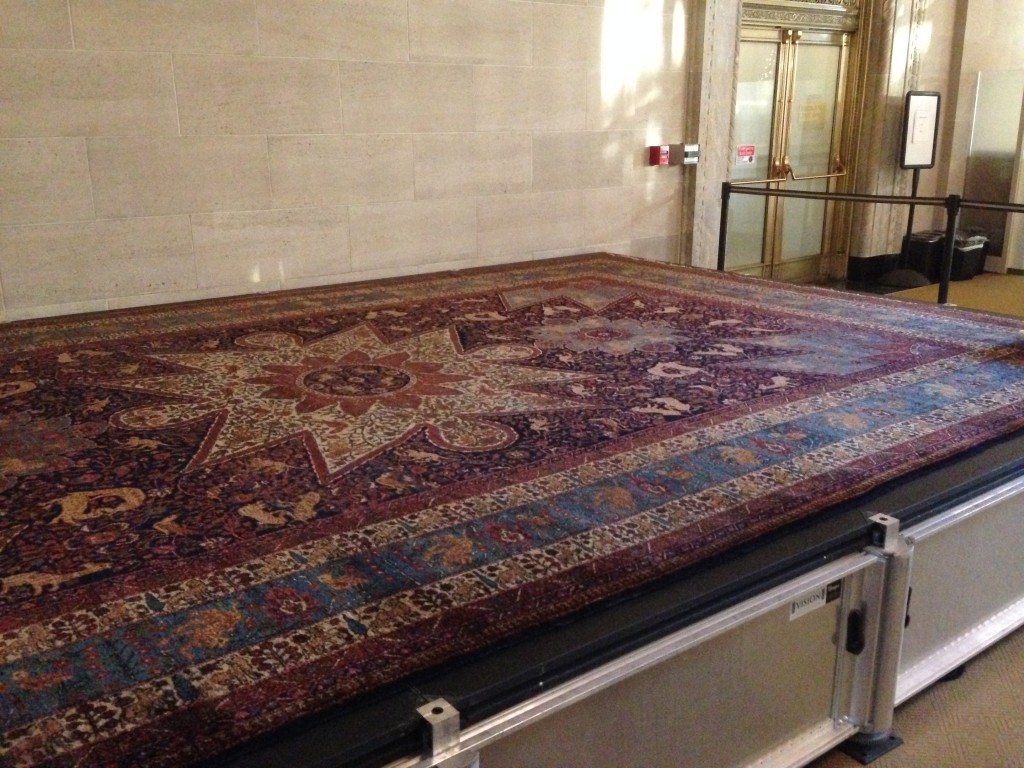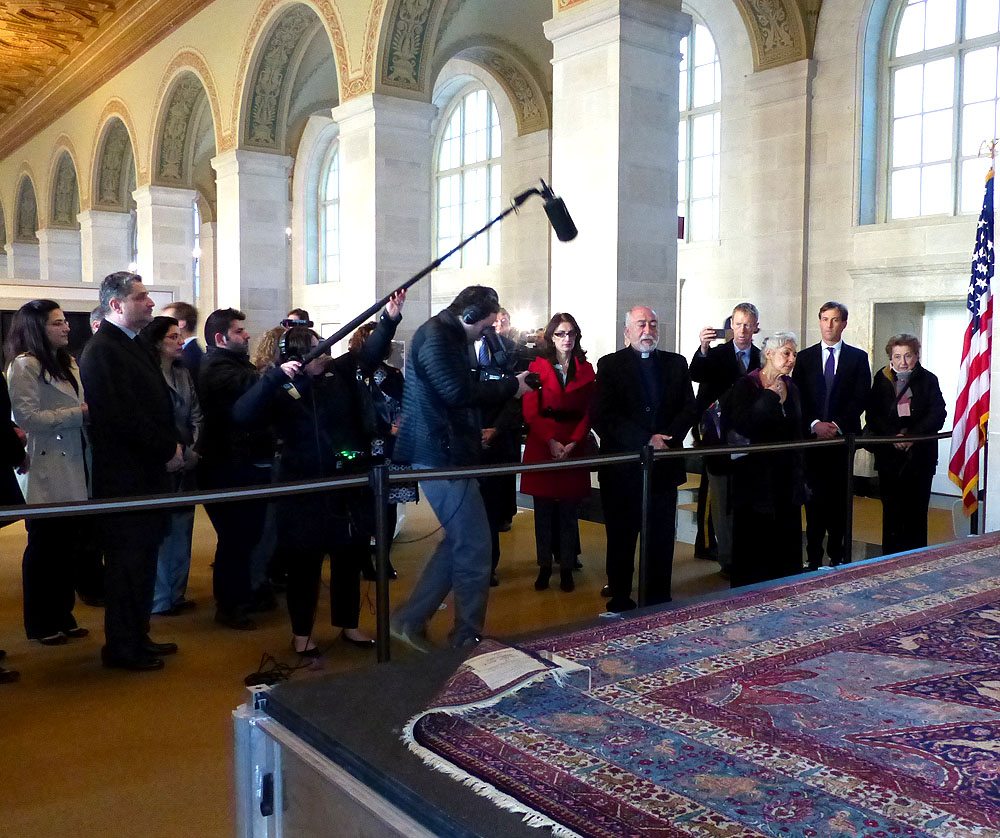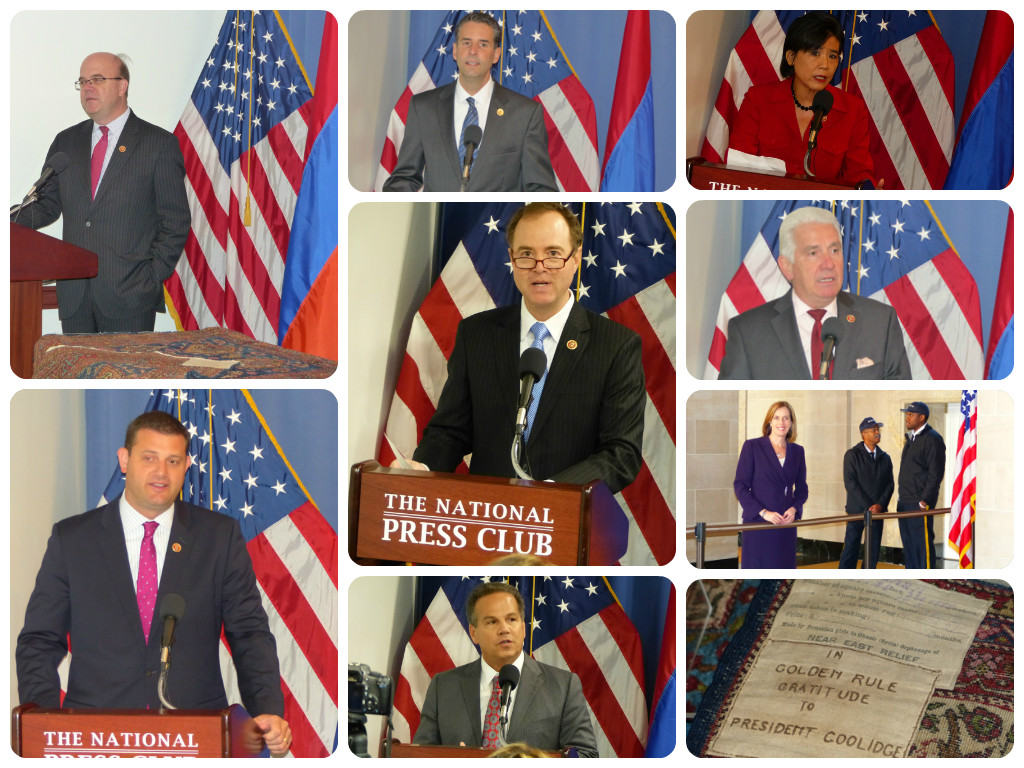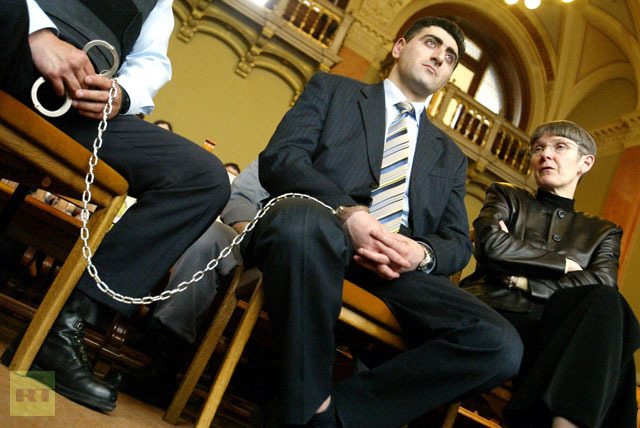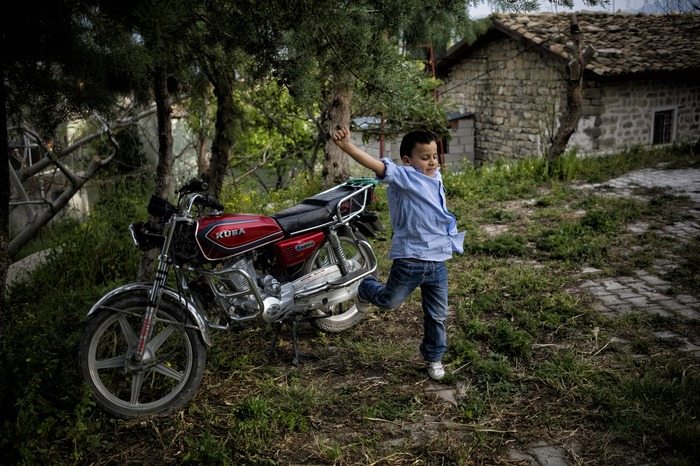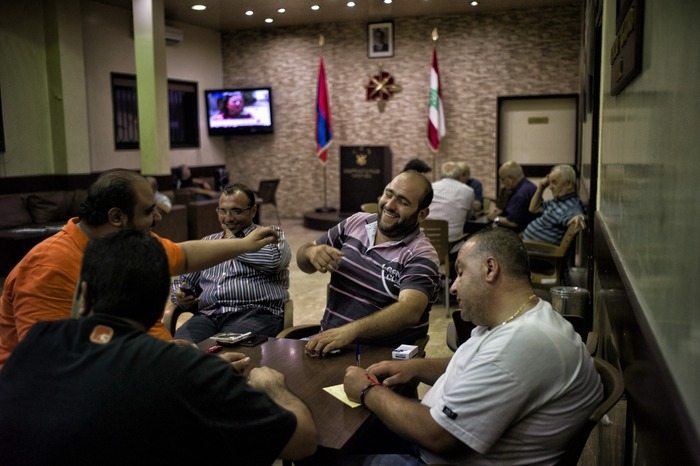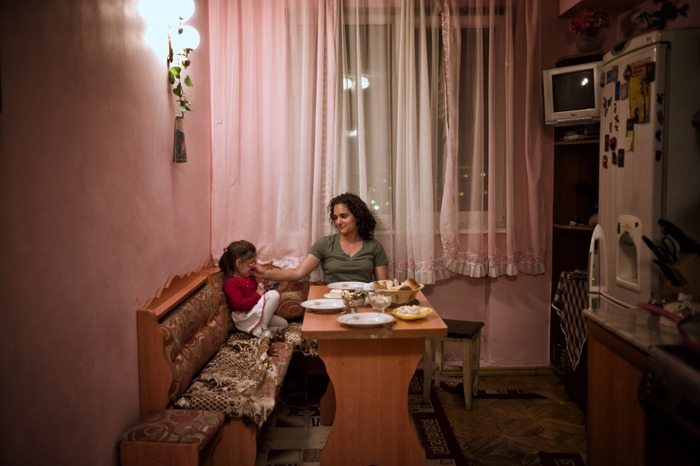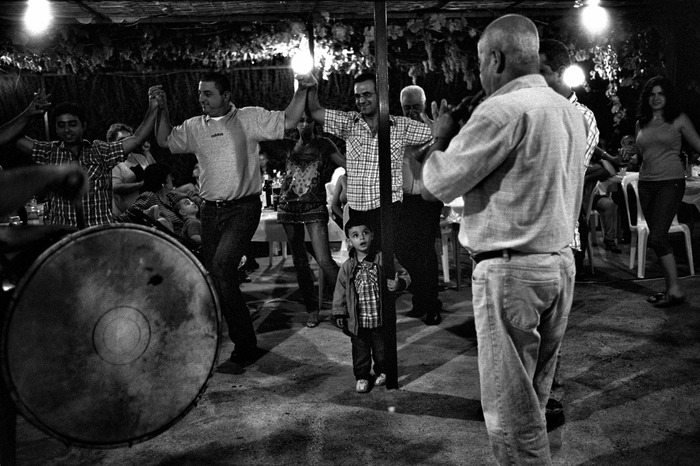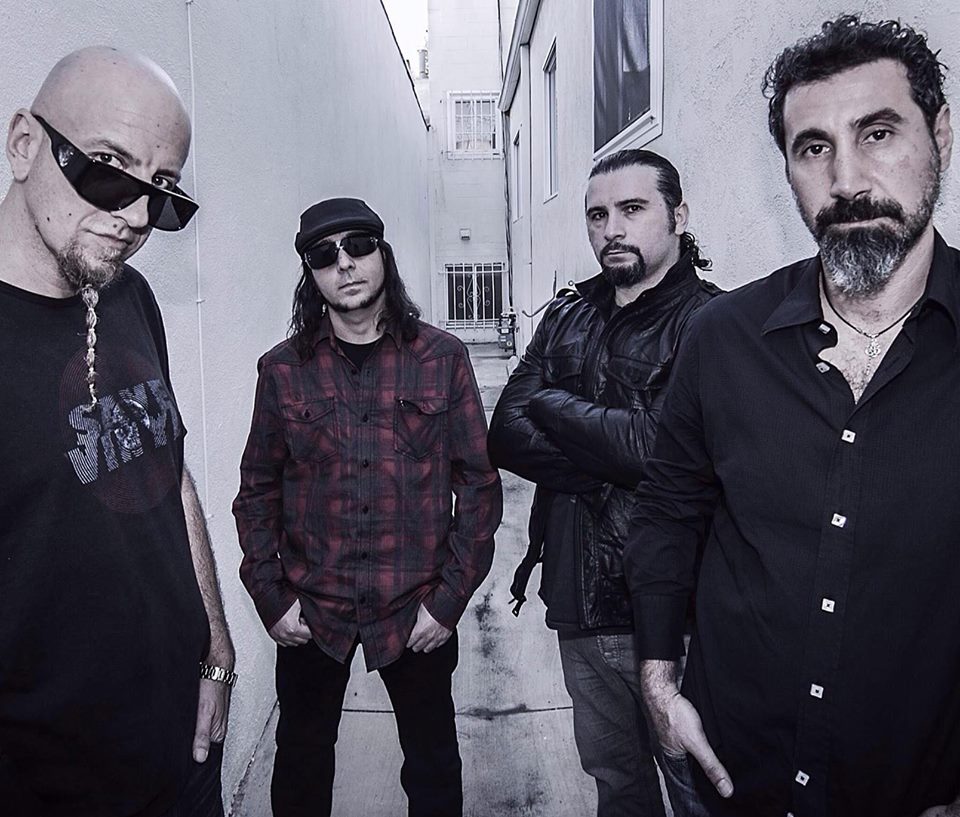Minsk Group, State Department Comments Fall Short of Assigning Blame to Azerbaijan
Special for the Armenian Weekly
STEPANAKERT (A.W.)—A day after Azerbaijan downed an Artsakh Mi-24 helicopter near the line of contact and declared Artsakh’s airspace a no-fly zone, Armenia’s President Serge Sarkisian arrived aboard a helicopter that landed at Stepanakert’s airport. Artsakh President Bako Sahakyan greeted Sarkisian—both clad in military fatigues—and, together with high ranking military officials, visited military sites to assess troop readiness. The President’s arrival came after a tense night marked by unyielding gunfire from the Azeri side that prevented rescue personnel from reaching the downed aircraft. So far, the reaction in Artsakh has been measured, Artak Beglaryan, spokesperson for NKR Prime Minister Ara Harutyunyan told the Armenian Weekly. “There is no panic within society. We are assessing the situation realistically.”

Artsakh President Bako Sahakyan greets Armenia’s President Serge Sarkisian at Stepanakert’s airport on Nov. 13. (Photo courtesy of President.am)
Artsakh’s Defense Ministry press service has reported that the ceasefire was breached by Azerbaijan around 250 times during the night of Nov. 12, with over 3,000 shots fired.
As a result, Armenian troops have been unable to approach the downed helicopter. The three crew members have been identified as Maj. Sergey Sahakyan, Sr. Lt. Sargis Nazaryan, and Lt. Azat Sahakyan. According to some sources, one of the three pilots aboard the helicopter may still be alive.
“An NKR Defense Ministry representative said one of the pilots may be alive, but the Azeri side hasn’t stopped the intensive shooting around the territory of the incident. At this moment, there is no update, and the situation remains the same,” Beglaryan told the Weekly at around 1 a.m. on Nov. 14 (NKR time).

A video—shot from the point of view of Azeri troops—shows the moment the helicopter was hit by a missile.
“It is apparent that Azerbaijan not only broke the ceasefire regime with a serious provocation, but continues to violate humanitarian laws by preventing the Armenian side from approaching the downed helicopter and potentially saving the life of the pilot. The International Red Cross Mission [ICRC] has already confirmed that it received a request from NKR. Hopefully they will react promptly to save the life of our pilot,” said Beglaryan.
The Artsakh State Commission on Prisoners of War, Hostages, and Missing Persons appealed to the ICRC on Nov. 13, informing them of the continued gunfire that prevented the Armenian side from reaching the flight crew.
Video footage counters official Azeri narrative
A video—shot from the point of view of Azeri troops—shows the moment the helicopter was hit by a missile. Azeri servicemen are heard cheering in jubilation. An explosion is seen upon impact on the ground. Another helicopter, which was flying just ahead of the downed aircraft, escapes unharmed.
The video clearly demonstrates that the downed helicopter was not engaged in an offensive against Azeri positions, and that the attack was not a self-defense maneuver as claimed by Azerbaijan’s Defense Ministry, said Armenia’s Defense Ministry Spokesman Artsrun Hovhannisian in a statement.
“Senseless are the assertions of the Azerbaijani side that the Armenian helicopters attacked their positions. The investigation of the debris of the helicopter will prove it was not armed,” Hovhannisian was quoted as saying. He also warned Azerbaijan of “painful consequences.”
Minsk Group criticized for inadequate response
In a Nov. 13 statement, NKR’s Ministry of Foreign Affairs called the attack “an unprecedented violation of the ceasefire fraught with serious escalation of tension.”
“This criminal and adventurous provocation by Azerbaijan… demonstrated its total disregard towards the OSCE Minsk Group Co-Chair countries and the international community as a whole,” read the statement, which also underlined the need for the adoption of measures to “de-escalate the tension,” to investigate the ceasefire violations, and to identify “the true perpetrator” of those violations. The statement further noted that “untargeted” calls for adherence to the ceasefire further embolden Azerbaijan with “a false sense of permissiveness and impunity.”
Beglaryan, spokesperson for NKR’s Prime Minister, said Artsakh citizens believe a strong statement condemning the attack is due. “[They] think that an adequate response should be provided for moral and rational reasons, and to prevent such actions in the future,” he told the Weekly.
To note, following the downing of the helicopter, the OSCE Minsk Group Co-Chairs released a statement on Nov. 12, expressing “serious concern” over the attack, and appealed to both sides to adhere to the ceasefire. The Co-Chairs fell short of unequivocally condemning the attack as an act of aggression by Azerbaijan, instead opting to address both countries.
Armenian National Committee of America Executive Director Aram Hamparian criticized the Minsk Group statement. “…The OSCE’s public response once again falls back into the deeply flawed pattern of placing equal blame on both sides for hostility that all the world knows is being directed by one man, Ilham Aliyev, the President of Azerbaijan,” he said.
State Department spokesperson: ‘there are views by both sides’
During a daily press briefing on Nov. 13, State Department Spokesperson Jen Psaki said the State Department “regret[s] the loss of life,” and expressed condolences to the families of those killed or injured. “This event is yet another reminder of the need to redouble efforts on a peaceful resolution to the Nagorno-Karabagh conflict, including reducing tension and respecting the ceasefire,” she said.

State Department Spokesperson Jen Psaki on whether Azerbaijan is to blame for the ceasefire violation: ‘We understand there are views by both sides, but I don’t have any comment from the U.S. Government on it.’
Psaki reiterated that the State Department was committed to helping both sides to increase efforts for a peaceful negotiation. “And naturally, retaliation, further violence, escalating tensions certainly does not help the effort,” she said.
When asked whether the State Department acknowledged that “it was Azerbaijan which violated the ceasefire [on Nov. 12], and also violated one of the main principles of peaceful settlement of the conflict, which is no use of force,” Psaki responded, “I don’t have any analysis of the exact events on the ground. We’ve seen the same reports. There are obviously comments and claims from both sides, but I don’t have any analysis beyond that.”
When the questioner persisted by adding “Azerbaijan shooting an Armenian vessel, then it’s pretty clear which party is violating the ceasefire,” Psaki responded, “We understand there are views by both sides, but I don’t have any comment from the U.S. Government on it.”
In the Diaspora, there have been statements of support for Artsakh from various organizations and communities on the one hand, and condemnations of the attack on the other.
When asked about the role of the Diaspora and whether he wished to convey a message to Armenian communities worldwide, Beglaryan first reassured that the situation is under control, and that the people of Artsakh are not in a panic. “As for what they should do? Support the Artsakh cause by raising the truth about the conflict and the latest incidents. In that context, Azerbaijan’s distortions and provocations in foreign countries should be targeted in an appropriate way,” he said, and added, “The diaspora is our huge potential in the field of information war, and that should be realized.”
Azerbaijan’s national heroes
The attack was not all that shocking, according to Beglaryan, as Azerbaijan’s track record has shown a willingness to escalate tensions and reward violence. “Certainly, Artsakh society is not surprised by the Azerbaijani actions, because a state that makes a hero out of a citizen that axes a sleeping Armenian officer could do anything against Armenians,” said Beglaryan, referring to the brutal murder of Armenian Lt. Gurgen Margaryan at the hands of Ramil Safarov at a NATO-sponsored Partnership for Peace program. Safarov was promoted from the rank of Lieutenant to Major upon his controversial extradition to Azerbaijan from Hungary, where he served a short prison term for his crime.

A protester holds the picture of Lt. Gurgen Margaryan on the 9th anniversary of his brutal murder. (Photo: Yerkir Media)
Incidentally, the Azeri Defense Ministry has already honored an officer with “a third degree medal For Distinguished Military Service” for shooting down the Mi-24 helicopter, reported Azeri sources.
Beglaryan said he feels confident in the NKR army. “[The army] demonstrated its preparedness on the front line only three months ago, and then during the latest military drill,” he told the Weekly. “I’m sure that it is completely ready to protect the security of the Artsakh Republic.”
Ceasefire violations, threats of war
The downed helicopter was on a training flight as part of joint Armenia-Artsakh military drills in the area. The “Unity 2014” exercises involved over 30,000 troops, 3,000 armored vehicles, artillery, and air defense units, according to the NKR Defense Ministry website.
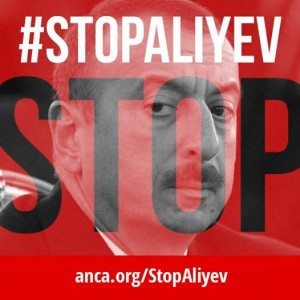
An online campaign initiated by the ANCA after the escalation of violence and violent rhetoric by Aliyev’s administration this summer.
This year has seen an increase in violence on the contact line. In July and August, around half a dozen attacks were staged by Azerbaijan’s military, which left five Armenian and 13 Azeri servicemen dead. At the height of tensions, Artsakh Prime Minister Ara Harutyunyan spent two nights on the front lines with soldiers, while hundreds came forward to volunteer. The attacks drew condemnation from U.S. State Department Deputy Spokesperson Marie Harf, which also gave way to criticisms accusing the Co-Chairs of maintaining an environment of impunity by failing to clearly blame one side, namely Azerbaijan. About a week after the attacks, Azerbaijan’s President Ilham Aliyev took to Twitter, where he threatened violence and declared war against the Republic of Nagorno Karabagh.
President Sarkisian and President Aliyev met in the presence of Russian President Vladimir Putin in Sochi, shortly after the eruption of violence in August.
President Aliyev habitually releases statements claiming that the state of Armenia was founded on Azerbaijani lands, and vows to “go back” to them through any means necessary.
The post Artsakh, Armenia React to Downed Helicopter appeared first on Armenian Weekly.


